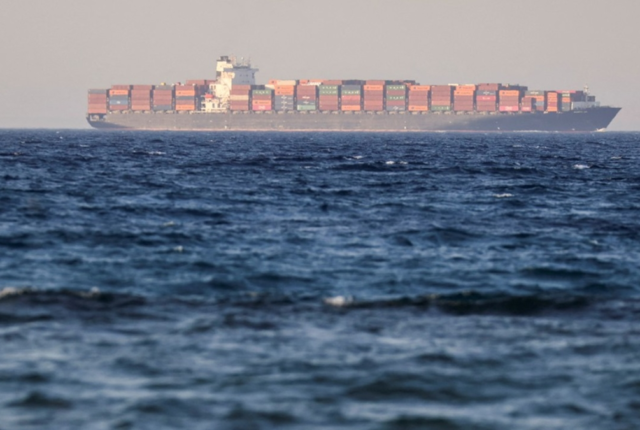
Australia’s Freight Dilemma: Road vs. Rail in the Face of Increasing Demand
Australia’s freight industry is at a crossroads. With an ever-increasing demand for goods and services across the nation, the question of how best to transport these goods has become more pressing than ever.
On one side, we have road transport, with its flexibility and extensive network. On the other, there’s rail transport, known for its efficiency in moving large quantities of goods over long distances. The choice between these two modes isn’t just about logistics—it’s about the future of Australia’s economy, environment, and infrastructure.
The Current State of Australia’s Freight
Australia’s freight industry is one of the most vital components of its economy, responsible for moving goods across vast distances, often between cities separated by hundreds or even thousands of kilometers.
Currently, road transport dominates the freight sector, accounting for the majority of domestic freight movements. Trucks are the backbone of this system, providing direct, door-to-door delivery services that are crucial for businesses and consumers alike.
However, rail transport also plays a significant role, especially in the movement of bulk commodities like coal, minerals, and agricultural products. Rail is often the preferred mode for long-haul transport, where its ability to move large volumes efficiently and at lower costs over long distances becomes a critical advantage.
Advantages of Road Transport
Road transport offers numerous advantages that make it the preferred choice for many businesses. The flexibility and accessibility of road transport are unmatched—trucks can reach almost any location, providing door-to-door service without the need for additional transfers.
This is particularly important in a country like Australia, where the population is dispersed across vast areas, and access to remote locations is often essential.
Speed is another key advantage. Road transport allows for quick delivery times, especially for short to medium distances, making it ideal for perishable goods or time-sensitive deliveries.
Moreover, significant investments in road infrastructure over the years have resulted in a well-developed and reliable network that supports the efficient movement of goods.
Challenges Facing Road Transport
Despite its many benefits, road transport is not without its challenges. One of the most pressing issues is traffic congestion, particularly in urban areas.
As cities grow and road usage increases, congestion can lead to delays and increased delivery times. Additionally, the wear and tear on roads from heavy trucks necessitate constant maintenance, leading to significant costs for governments and taxpayers.
Environmental impact is another major concern. Road transport is a significant contributor to carbon emissions, with heavy trucks accounting for a substantial portion of the transport sector’s greenhouse gas emissions.
Rising fuel costs also pose a challenge, impacting the overall cost of road transport and making it less competitive compared to other modes. Furthermore, the industry faces a shortage of drivers, exacerbated by the demanding nature of the job and the aging workforce, which could limit the capacity of road transport in the future.
Advantages of Rail Transport
Rail transport, while less flexible than road, offers several significant advantages, particularly for moving large volumes of goods over long distances.
One of the key benefits of rail is its efficiency in handling bulk commodities. Trains can move vast quantities of goods in a single trip, making them ideal for industries such as mining, agriculture, and manufacturing.
Environmental sustainability is another strong point for rail transport. Trains are far more fuel-efficient than trucks, producing significantly lower carbon emissions per ton-kilometer.
This makes rail a more environmentally friendly option, particularly in an era where reducing carbon footprints is increasingly important for businesses and governments alike.
Cost-effectiveness is another major advantage of rail transport. Over long distances, rail can be more economical than road, particularly when transporting bulk goods.
The cost per ton-kilometer is generally lower for rail, making it an attractive option for industries looking to optimize their logistics costs.
Challenges Facing Rail Transport
However, rail transport is not without its own set of challenges. One of the primary issues is the limitation of infrastructure. While Australia’s rail network is extensive, much of it is outdated and requires significant investment to modernize. This includes upgrading tracks, signaling systems, and rolling stock to improve efficiency and reliability.
Flexibility is another concern. Unlike road transport, which can reach virtually any location, rail is limited to areas with existing tracks. This means that additional modes of transport, such as trucks, are often needed to complete the journey, adding to costs and complexity.
High initial investment and maintenance costs also pose a barrier to the expansion of rail transport. Building new rail lines or upgrading existing ones requires substantial capital, which can be difficult to justify without guaranteed long-term demand.
Economic Considerations
When comparing road and rail transport, cost is a critical factor that businesses must consider. Road transport tends to have lower upfront costs, as trucks are cheaper to purchase and operate, and the road network is already well-developed. However, the ongoing costs, including fuel, maintenance, and driver wages, can add up, particularly as fuel prices rise.
Rail transport, on the other hand, involves higher initial costs due to the infrastructure required, but it can offer lower operational costs over time, especially for long-haul and bulk transport.
The cost per ton-kilometer for rail is generally lower than for road, making it a more cost-effective option for certain types of freight. However, this cost advantage can be offset by the need for additional handling and transfer points when rail does not provide door-to-door service.
Environmental Impact of Freight Transport
The environmental impact of freight transport is a growing concern, particularly as Australia seeks to meet its climate goals. Road transport is a significant contributor to greenhouse gas emissions, with trucks responsible for a large share of the transport sector’s carbon footprint. This has led to increased scrutiny of the road transport industry and calls for more sustainable practices.
In contrast, rail transport is generally seen as a more environmentally friendly option. Trains produce significantly lower emissions per ton-kilometer compared to trucks, making rail a key component of efforts to reduce the environmental impact of freight transport. Additionally, rail is more energy-efficient, particularly for long-distance and bulk transport, where its advantages in fuel efficiency become most apparent.
Public Opinion and Stakeholder Perspectives
The debate between road and rail transport is not just a technical or economic issue—it’s also a matter of public opinion and stakeholder perspectives. The freight industry, for example, has a vested interest in the outcome of this debate, with different sectors favoring different modes of transport depending on their specific needs and challenges.
Public opinion is also an important factor. Concerns about traffic congestion, road safety, and environmental impact are all driving a push for more sustainable transport options, including greater use of rail. At the same time, there is strong support for road transport, particularly in rural and remote areas where it provides essential services that rail cannot easily replicate.
Industry associations and lobby groups also play a key role in shaping the debate, advocating for policies and investments that support their preferred mode of transport. Understanding these perspectives is critical to finding a balanced solution that meets the needs of all stakeholders.
The choice between road and rail transport is a complex and multifaceted issue that will have far-reaching implications for Australia’s economy, environment, and society. Both modes of transport offer significant advantages, but they also face serious challenges that must be addressed. As demand for freight transport continues to grow, finding a balanced and sustainable approach will be critical to ensuring the continued success of Australia’s freight industry.
FAQs
Why is freight transport important to Australia’s economy?
Freight transport is crucial for Australia’s economy as it ensures the efficient movement of goods across the country, supporting businesses, industries, and consumers. It enables trade, connects regional areas to markets, and underpins economic growth.
What are the main environmental concerns with road freight?
The primary environmental concerns with road freight transport are its high carbon emissions and contribution to air pollution. Heavy trucks are significant sources of greenhouse gases, which contribute to climate change, and their reliance on fossil fuels exacerbates these issues.
How does rail transport compare in cost with road transport?
Rail transport can be more cost-effective than road transport over long distances, particularly for bulk goods. While rail requires higher initial investments in infrastructure, its lower operational costs and fuel efficiency can lead to lower overall costs per ton-kilometer.





